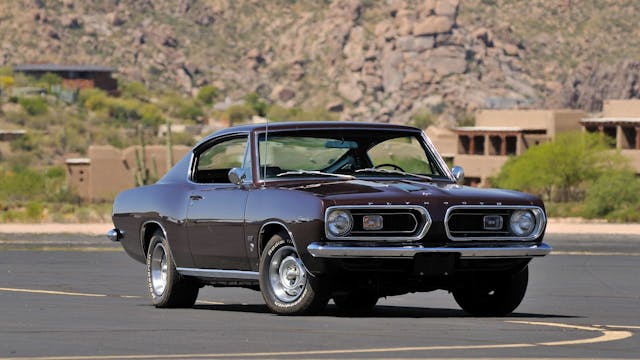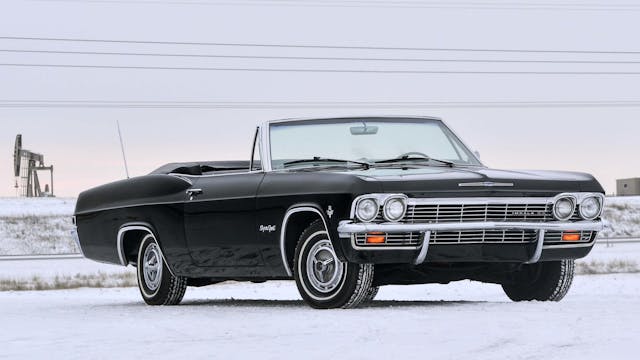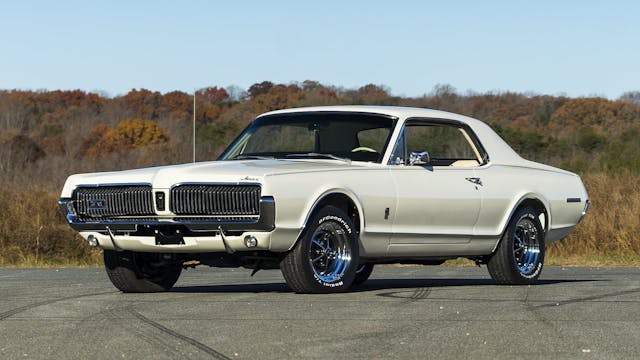Media | Articles
The 5 coolest cars named after animals, according to the Hagerty Community
For something that is largely arbitrary, car names are considered sacred by the automotive faithful. Should an OEM revive a nameplate and not live up to consumer expectations set by the model’s previous generation, the critics will be vocal (you can keep your modern GTO comments to yourself.) However, before a nameplate can be revived it must be born. The conference rooms of automakers surely still have coffee spill stains and pizza grease in the floorboards from late-night brainstorming sessions choosing the perfect name for a new model. More than occasionally, an animal provided inspiration for a car that would, once realized, be beautifully photographed for brochures and enjoyed by drivers on the road.
With so many cars that share names with animals, we were curious which were the coolest of the group, so we asked the Hagerty Community to help us decide. We plucked the top five answers from the ensuing discussion.
Plymouth Barracuda

At its core, the Barracuda embodied the Ford Mustang formula applied to the Valiant. In fact, it was the same formula at the same time, as the Barracuda nameplate debuted as a trim on the 1964 Valiant. There isn’t much about the car that reminds us of the fish with which it shares a name—which might be a good thing, considering the fish isn’t exactly a looker. The model evolved significantly throughout its lifespan, moving from an A-body to an E-body platform and receiving more powerful engines along the way. The performance version of the Barracuda got its name shortened to just the apostrophized ‘Cuda right at its peak in 1970, though the regular-spec cars retained the full, unabbreviated name through the model’s discontinuation in 1974.
Shelby Cobra

The AC Ace is a great car in it own right, but decades before Tim Taylor grunted about more power on Home Improvement, Carroll Shelby was shoehorning small-block Ford engines into the lithe AC chassis to make it faster. The first Cobra took to the streets in 1962 and became a racetrack terror only shortly after. The first editions were 260-cube V-8s, but the desire for more displacement soon took hold of Shelby, who upped the ante and transitioned to stuffing in big-block 427 and 428 Ford engines. Those in the know will tell you they prefer the 289-cubic-inch model, as it has the power to scare you without being nearly as brutal as the big-block cars.
Marketplace
Buy and sell classics with confidence
Cheetah GT
Probably the wildest looking car on this list, Bill Thomas’ Cheetah GT is the one that most lives up to its name. It is fast, and wrestling one will make you nervous. Under the fiberglass body is a mishmash of parts pulled from the Corvette bin. The cabin-rear design allowed the small-block Chevrolet engine to be moved towards the back for better weight distribution. The Cheetah’s engineers then took the idea to the extreme by moving the powertrain so far back that the car wasn’t equipped with a driveshaft—the transmission linked straight to the rear axle.
Chevrolet Impala

As cool-sounding as “Impala” is, how it became the name for Chevrolet’s full-size car is a bit unclear. The animal is native to Africa, and its features and description don’t particularly align with the stylish family car that rolled off Chevrolet’s assembly lines for 62 years. The gazelle-like animal can only run a top speed of 56 mph in a zig-zag pattern, while the Chevrolet can easily run faster, not to mention straighter. The car cuts a better figure in red, too. If there’s a 409 under the hood, it definitely sounds better.
Mercury Cougar

If upscale muscle is your thing, the first-generation Mercury Cougar may be right up your alley. Starting with Ford’s Mustang, Mercury stretched the trotter’s wheelbase three inches and gave it fresh styling. The first generation stretched from 1967 to 1970 and was billed as a pony car; the second generation (1971–73) was more of a personal luxury car, akin to the Pontiac Grand Prix.
Is there one you think the community missed? Leave your choice in the comments below.










